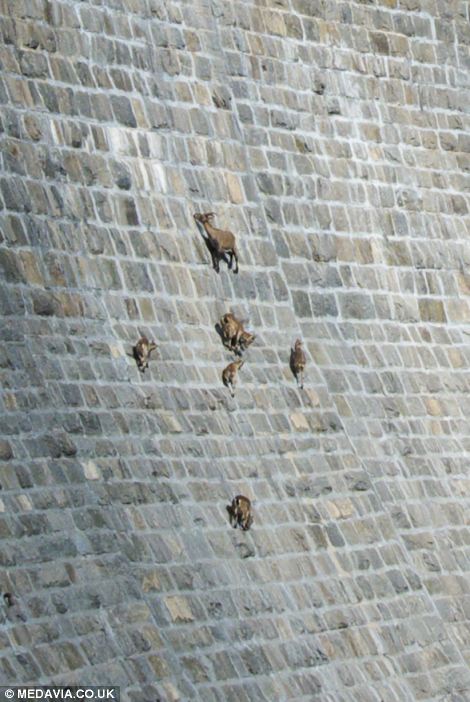You've skipped the entire content of the article that pertains directly to evolution and its hoaxes, and went straight to a single comment in the conclusion?
The article is very long and contains a lot of detail that would take longer to debunk than to write in the first place (as I shall illustrate in a moment with the time it takes me to deal with a single example). I picked on his conclusion as conclusions are important, and also it demonstrated one simple thing - that he doesn't understand his subject. I have never read any scholarly work with such an elementary error that somehow escaped editing and peer review. From this point, you know that Foard cannot be trusted in any detail.
You and Scimi have been going on about frauds and fakes, so let's look at one that Foard quotes and which is also in the illustration you posted before - a favourite of Creationists, Nebraska Man.
Nebraska Man
Here's how Foard describes him:
The twentieth century is full of dethroned "ape-men" who never existed outside of evolutionist imagination, such as Nebraska Man, a pig
Contrary to the impression given here, Nebraska Man was never widely accepted as a proven hominid and rejected altogether after 5 years. The only reason anyone remembers it is because its preserved in Creationist literature.
There's also no reason to think it was a fraud or fake - rather it was an example of wishful thinking for a noble reason - surprisingly, a Christian reason.
The true story of this mistaken discovery is complicated. The fossil tooth was found by Harold Cook (rancher and geologist) in Nebraska and sent to Henry Fairfield Osborn of the American Museum of Natural History for verification. He was delighted to receive it because he was in the middle of a public debate with a man called William Jennings Bryan.
Back in 1922 evolution was under heavy attack from Christian fundamentalists. (If you want to know what inspired Richard Dawkins to take on Creationists, start here.) Bryan was especially aggressive. Osborn was appalled by this because he saw evolution as being completely compatible with religion. In an attempt to bridge the divide he said this:
The moral principle inherent in evolution is that nothing can be gained in this world without an effort; the ethical principle inherent in evolution is that only the best has the right to survive; the spiritual principle in evolution is the evidence of beauty, of order, and of design in the daily myriad of miracles which we owe our existence.
However, Bryan continued his attacks. So when the fossil turned up on Osborn's desk, he was ready to be deceived. On examination, Osborn's first reaction was that it might be an anthropoid ape rather than human. He named it Hesperopithecus haroldcookii (which means 'Harold Cook’s ape of the western world'). But as yet, Osborn was cautious:
…it would be misleading to speak of this Hesperopithecus at present as an anthropoid ape; it is a new and independent type of Primate, and we must seek more material before we can determine its relationships. (American Museum Novitiates)
Osborn passed over the fossil for examination by 3 colleagues who supported the notion that it was ape, an intermediate offshoot between Dryopithecus, the hypothesized ancestor of the living African apes, and Sivapithecus, a fossil ape from Asia close to our own lineage. Other scientists who had read the earlier papers thought the teeth more likely belonged to a monkey, bear, rodent, or carnivore, and one scientist (who is not named) even proposed that Cook’s tooth was truly “An incus bone [inner ear bone] of a gigantic mammal but the ape diagnosis was persisted with.
However, attempts to find more remains at the same site began to tell a different story. The tooth was now correctly re-identified as a fossil from a peccary, an ancestor of the pig. Nebraska Man's brief moment in the limelight was over.
Even the name 'Nebraska Man' didn't come from a scientist. It was invented by a journalist for
The Illustrated London News, which also contributed a fanciful picture of what he might have looked like roaming the ancient landscape. Osborn didn't like it, but he couldn't stop it.
Of course, it's this name and this picture which can now be found in countless Creationist accounts.
To summarise:
1. Nebraskan Man is in no way an example of an anti religion agenda or deliberate fraud.
2. Osborn himself was a decent man who was very pro Christian. The mistake he made was sincere.
3. The mistake itself was not as great as suggested. He never called the fossil a man, and even at the peak of his error regarded it as a previously unknown primate.
4. To describe the fossil as simply 'a pig' as Foard does is deceptive, it sounds like farmyard remains. In fact it dates from long before any farmyard ever existed. It is a genuine fossil but that of a peccary, a pig ancestor (which does have some resemblance to human teeth although it should not have been mistaken). It's also not true that Osborn called him an 'ape man'. All of this comes from Foard (or rather, it's repeated by Foard from other Creationist sources.)
5. The scientific reception was cautious and it never achieved acceptance. Within a short timescale for a pre internet period, the fossil was decisively rejected.
6. It played no part in mainstream evolutionary thinking then or now.
7. Even the name and the ever popular illustration had nothing to do with evolution.
Far from occupying a key place in the 'evolutionist imagination' as Foard calls it, the fossil in fact has achieved fame and immortality only in the imagination of Creationists.
More here:
http://scienceblogs.com/laelaps/2009/05/27/nebraska-man-nothing-but-the-t/
